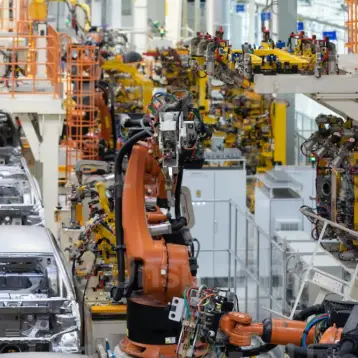|
Developed in conjunction with the University of Toledo’s Thin Film Silicon Photovoltaic Laboratory, each panel is approximately one meter wide and five and a half meters long. The cells are only one micrometer thick (compared to the 150 to 200 micrometer thickness of traditional crystalline silicon solar cells), allowing for the increased flexibility of the panel material. The thinner panels also help keep manufacturing costs down compared to materials incorporating thicker solar cells.
Unlike traditional solar cells which use a single layer, Xunlight solar cells use three layers of photovoltaic material, each designed to capture energy from a different portion of the solar spectrum. The three materials used are amorphous silicon, amorphous silicon germanium, and nanocrystalline silicon. However, even with the triple layer approach, one of the Xunlight panels is only 8% efficient while some other panels are 20% efficient or more; a Xunlight panel will only generate about 330 watts of power compared to the 740 watts typically generated by a crystalline silicon panel of the same size.
|
Xunlight is also lowering costs using a new roll-to-roll manufacturing process using a 200 foot long series of connected vacuum deposition chambers. The chambers use plasma-enhanced vapor deposition to deposit cells on a stainless steel substrate at a rate of 720 square feet per hour. Their first manufacturing line is operational and three more are scheduled for completion by the end of 2010.
Other companies are working on flexible solar panels using copper indium gallium selenide (CIGS) cells which share many of the properties of these rollable solar cells but with a higher efficiency on par with traditional crystalline cells. However, the CIGS cells are prohibitively expensive whereas the lower efficiency Xunlight panels are financially viable now so represent a compromise between effectiveness and affordability.
TFOT has previously reported on several innovations in solar power technology including a new method for manufacturing CIGS solar cells developed by researchers at UCLA, new biological-based solar cell materials from BioSolar, dye-sensitive solar cells that are nearly as efficient as traditional solar cells, and the aigo portable solar charger for small electronics.
Read more about the Xunlight solar panels on their Xunlight product page. More information about the new manufacturing process is available in this Xunlight press release (PDF).












